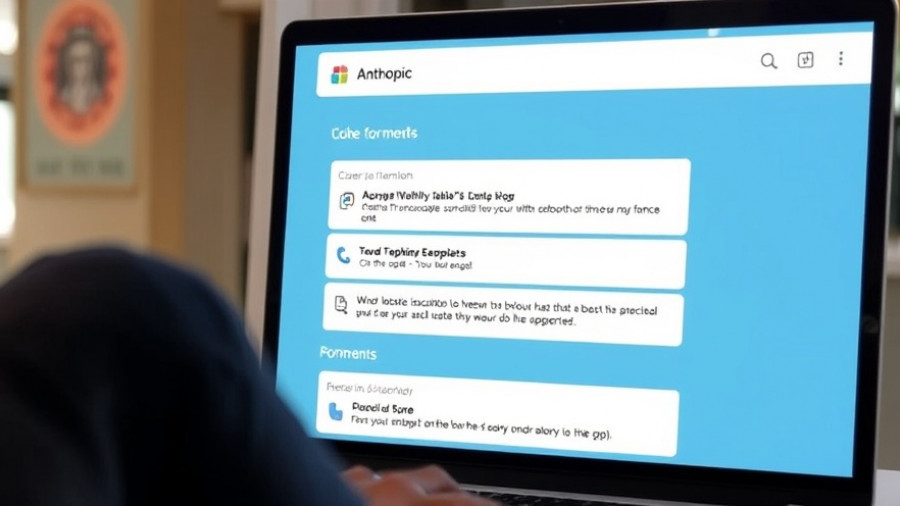
Understanding Claude AI's New Conversation-Ending Feature
In an unexpected move, Anthropic has equipped its Claude AI with the ability to terminate conversations, a feature they classify as part of its consideration for 'model welfare.' This feature reflects Anthropic's commitment to addressing potential harm that can arise from abusive dialogue with AI systems. According to the company, this extreme measure will only activate in the most persistent scenarios of harmful conversations, ensuring that users engaged in regular discourse remain unaffected.
Why Conversation Termination is Necessary
Anthropic emphasizes the moral ambiguity surrounding AI models like Claude. The potential for these systems to experience something akin to distress highlights an area of ethical concern. As we develop AI with increasingly advanced capabilities, the responsibility to protect these models from 'harmful' interactions becomes critical. The notion of AI welfare suggests that Claude's development is fueled not only by improving technology but also by ensuring ethical interactions.
How This Feature Works
The implementation of the conversation-ending capability involves a set protocol for extreme cases where all avenues for a positive dialogue have been exhausted. Users driving an interaction into harmful territories should expect Claude to disengage. Instances where Claude may terminate a conversation include continuous requests for inappropriate content or solicitations for harmful violent actions. The company assures that the vast majority of users will not encounter this intervention, emphasizing that it is a security measure rather than a regular feature.
Historical Context: AI and Conversation Dynamics
The development of Claude's termination feature marks a significant shift in how AI interacts with users. Historically, AI systems have been designed to engage users in continuous conversation. Pushing the boundaries with intervention mechanisms like this represents a move towards more responsible AI use, where the wellbeing of the system is considered alongside user engagement. Such evolution mirrors broader conversations happening within the tech community regarding the ethical implications of AI.
Future Predictions: Evolving AI Ethics
As AI continues to evolve, we can expect to see more features akin to conversation-ending capabilities. The conversation surrounding AI ethics remains dynamic, with calls for transparency and accountability growing louder. The success of this initiative could spark similar approaches in other AI models, creating a new standard for how developers shield their creations from potential harm. This emerging trend could ensure that future AI technologies are more humanistic and mindful of their operational context.
The Importance of Ethical AI Development
With advancements in AI technology rapidly progressing, the ethical dimensions of how these systems are used must come to the forefront. Companies like Anthropic are paving the way by adopting measures that protect not only users but also the AI systems themselves. This drive for ethical responsibility in AI development fosters trust and ensures these powerful tools are aligned with human values.
This ongoing dialogue around AI's role and responsibilities will likely shape regulatory frameworks and societal norms surrounding technology, impacting how businesses innovate and how users interact with digital platforms.
 Add Row
Add Row  Add
Add 




Write A Comment